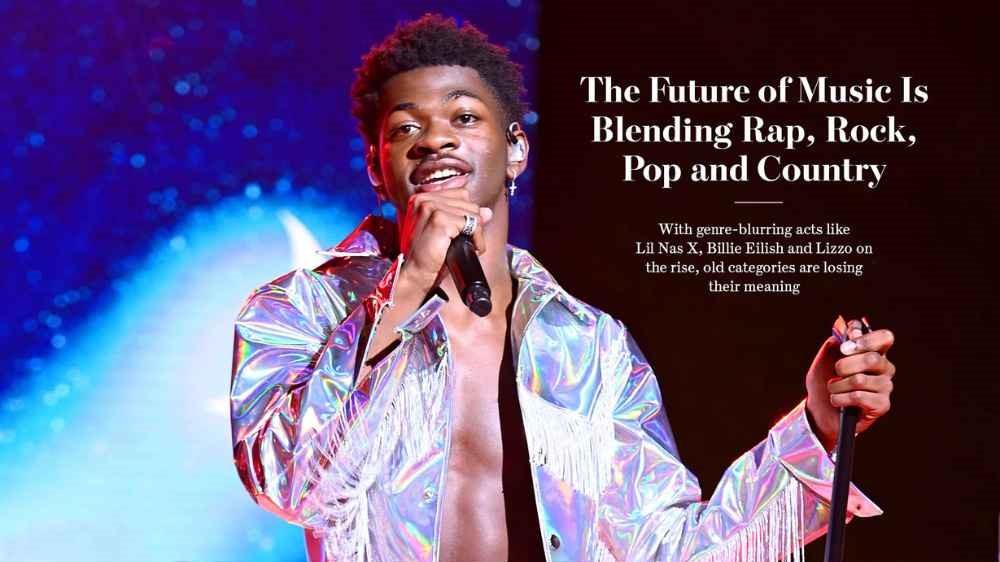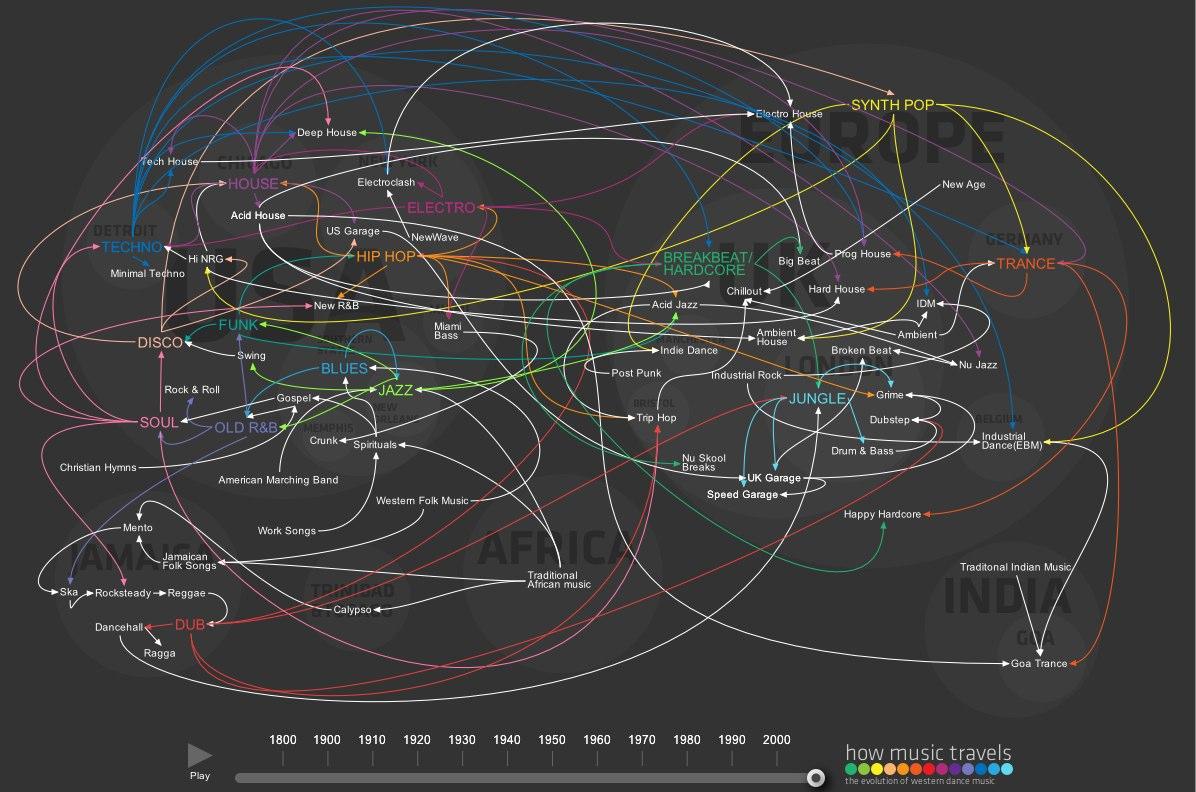In a world where music has long been neatly categorized into distinct genres, a new wave of artists is reshaping the sonic landscape by dissolving these boundaries. Genre blending-once considered experimental or niche-is now a mainstream phenomenon, inviting listeners to experience sound in unexpected and exhilarating ways. By weaving together diverse musical traditions, rhythms, and styles, these innovators are not only crafting fresh auditory experiences but also challenging our very notions of what music can be. This article explores how artists are breaking sound barriers, forging new paths that transcend labels and redefine creativity in the modern musical era.
Table of Contents
- The Evolution of Genre Blending in Contemporary Music
- Innovative Techniques Artists Use to Fuse Diverse Sounds
- Cultural Influences Shaping Cross-Genre Collaborations
- Challenges and Opportunities in Breaking Traditional Sound Barriers
- Strategies for Emerging Musicians to Experiment with Genre Fusion
- Insights and Conclusions

The Evolution of Genre Blending in Contemporary Music
Over the past few decades, the rigid boundaries that once defined musical genres have steadily dissolved, giving way to a vibrant tapestry of sounds that defy categorization. Artists today draw inspiration from a mosaic of cultures, traditions, and technologies, crafting pieces that are as eclectic as they are innovative. This fluidity has not only expanded the sonic palette of contemporary music but also challenged listeners to embrace new auditory experiences.
At the heart of this transformation lies a deliberate fusion of styles – from the pulsating beats of hip-hop intertwined with the melodic intricacies of jazz, to electronic rhythms infused with the raw emotion of folk. This cross-pollination has birthed subgenres that are at once familiar and refreshingly novel, blurring lines between mainstream and underground. The creative freedom afforded by digital production tools and streaming platforms has empowered musicians to experiment without constraints, fostering a culture where collaboration reigns supreme.
- Genre fluidity encourages artistic expression beyond traditional labels.
- Collaborations between artists from diverse backgrounds amplify innovation.
- Technological advances enable seamless blending of analog and digital sounds.
- Audience openness shifts towards appreciating hybrid musical identities.
| Era | Dominant Blend | Iconic Artist(s) |
|---|---|---|
| 1980s | Rock + Synthpop | Depeche Mode |
| 1990s | Hip-hop + Jazz | A Tribe Called Quest |
| 2000s | R&B + Electronic | FKA twigs |
| 2010s | Pop + Indie Folk | Lorde |
| 2020s | K-pop + Trap | BLACKPINK |
Innovative Techniques Artists Use to Fuse Diverse Sounds
Artists today are pushing the boundaries of traditional music production by employing cutting-edge techniques that allow them to merge seemingly incompatible genres into cohesive, fresh sounds. One popular method is the use of sampling, where musicians extract unique riffs, beats, or melodies from various genres and recontextualize them within new compositions. This approach not only pays homage to the original work but also creates a hybrid that surprises and engages listeners.
Another innovative technique is the application of digital audio workstations (DAWs) combined with AI-driven tools. These technologies enable artists to manipulate sound in unprecedented ways: time-stretching, pitch-shifting, and layering disparate rhythms and textures until a seamless fusion emerges. By experimenting with these tools, musicians can blend the organic warmth of analog instruments with the precision of electronic elements.
- Polyrhythmic layering: Combining complex rhythmic patterns from Afrobeat with electronic dance music beats.
- Microtonal tuning: Incorporating scales from Middle Eastern or Indian music into Western pop structures.
- Field recordings integration: Adding environmental sounds, like city ambiance or nature, as rhythmic or melodic components.
| Technique | Example Fusion | Effect |
|---|---|---|
| Granular synthesis | Jazz + Electronic | Creates textured soundscapes |
| Live looping | Folk + Hip-Hop | Builds dynamic, evolving layers |
| Hybrid instrumentation | Classical + Reggae | Blends orchestral depth with groove |

Cultural Influences Shaping Cross-Genre Collaborations
At the heart of cross-genre collaborations lies a vibrant tapestry of cultural exchanges that challenge traditional musical boundaries. Artists today draw inspiration from a global palette, infusing their work with diverse rhythms, languages, and storytelling techniques. This cultural interplay not only enriches the sonic experience but also fosters a deeper connection between disparate audiences who find common ground in the fusion of familiar and foreign sounds.
These collaborations often act as bridges, linking genres rooted in distinct historical and social contexts. For example, the melding of Afrobeat’s pulsating grooves with hip-hop’s lyrical prowess creates a dynamic dialogue that highlights shared narratives of resilience and celebration. Similarly, the integration of traditional folk instruments into electronic music adds layers of texture and authenticity, inviting listeners to explore new emotional landscapes.
Key cultural drivers behind these innovative partnerships include:
- Globalization and digital connectivity, enabling effortless exchange of ideas and sounds.
- Artists’ personal heritage and experiences that inspire genre-blending creativity.
- Audience demand for fresh and authentic storytelling through music.
- Collaborative platforms encouraging experimentation across cultural lines.
| Culture | Genre Fusion Example | Unique Element |
|---|---|---|
| Latin American | Reggaeton + Trap | Rhythmic dembow pattern |
| West African | Afrobeat + Jazz | Polyrhythmic percussion |
| East Asian | K-Pop + EDM | Synthetic vocal layering |
| Middle Eastern | Traditional Oud + Rock | Modal scales and microtones |

Challenges and Opportunities in Breaking Traditional Sound Barriers
Venturing beyond the familiar confines of traditional genres invites both exciting possibilities and significant hurdles. One of the primary challenges artists face is the risk of alienating their established audience. Fans often hold strong attachments to certain sounds, and blending genres can disrupt these expectations, making it difficult for artists to maintain a loyal base while exploring new creative territories.
Yet, these challenges open the door to unparalleled innovation. Artists who courageously merge disparate styles often discover fresh avenues for expression, crafting unique soundscapes that resonate across diverse listener groups. This experimentation fosters a vibrant musical ecosystem where boundaries dissolve, allowing for a more inclusive and eclectic auditory experience.
- Creative Freedom: Combining genres empowers artists to transcend formulaic patterns.
- Market Expansion: Cross-genre tracks can appeal to multiple demographics.
- Collaboration Opportunities: Diverse styles encourage partnerships between musicians from different backgrounds.
- Technological Integration: Modern production tools facilitate seamless blending of sounds.
| Challenge | Opportunity |
|---|---|
| Audience Resistance | Building New Fanbases |
| Genre Purism | Redefining Musical Norms |
| Marketing Complexity | Diverse Promotional Channels |
| Production Complexity | Innovative Sound Design |

Strategies for Emerging Musicians to Experiment with Genre Fusion
Stepping beyond traditional boundaries requires a fearless mindset. Emerging musicians should start by immersing themselves in diverse musical cultures-not just listening, but analyzing the core elements that define each genre’s identity. This deep dive allows artists to identify harmonious intersections where contrasting sounds can naturally coexist. Experimentation then becomes a playground rather than a challenge, fostering innovative combinations that feel authentic and fresh.
Collaboration is a powerful catalyst in genre fusion. Partnering with artists from different musical backgrounds invites new perspectives and techniques. Whether it’s a jazz saxophonist jamming with an electronic producer or a folk guitarist teaming up with a hip-hop lyricist, these partnerships spark creative tension that pushes boundaries. Embracing this collaborative spirit can lead to unexpected textures and rhythms that enrich the sonic palette.
Practical experimentation strategies include:
- Layering unconventional instruments over traditional beats
- Using digital effects to morph acoustic sounds
- Reimagining song structures by blending rhythmic patterns
- Sampling obscure or regional music to add unique flavors
To visualize the fusion process, consider this simple framework for balancing genres:
| Genre A | Fusion Element | Genre B | Resulting Sound |
|---|---|---|---|
| Blues | 12-bar progression | Electronic | Soulful synth grooves |
| Classical | String arrangements | Hip-Hop | Orchestral beats |
| Reggae | Offbeat rhythm | Rock | Energetic skank riffs |
Insights and Conclusions
As the boundaries between genres continue to blur, artists are crafting soundscapes that defy traditional labels, inviting listeners into uncharted auditory territories. This blending of styles not only challenges our expectations but also enriches the musical landscape with fresh perspectives and innovative expressions. In embracing the fluidity of sound, creators remind us that music is not confined by rigid categories-it is a living, evolving dialogue that thrives on experimentation and connection. As we tune in to these genre-defying works, we are encouraged to listen not for labels, but for the stories and emotions that resonate beyond them.

